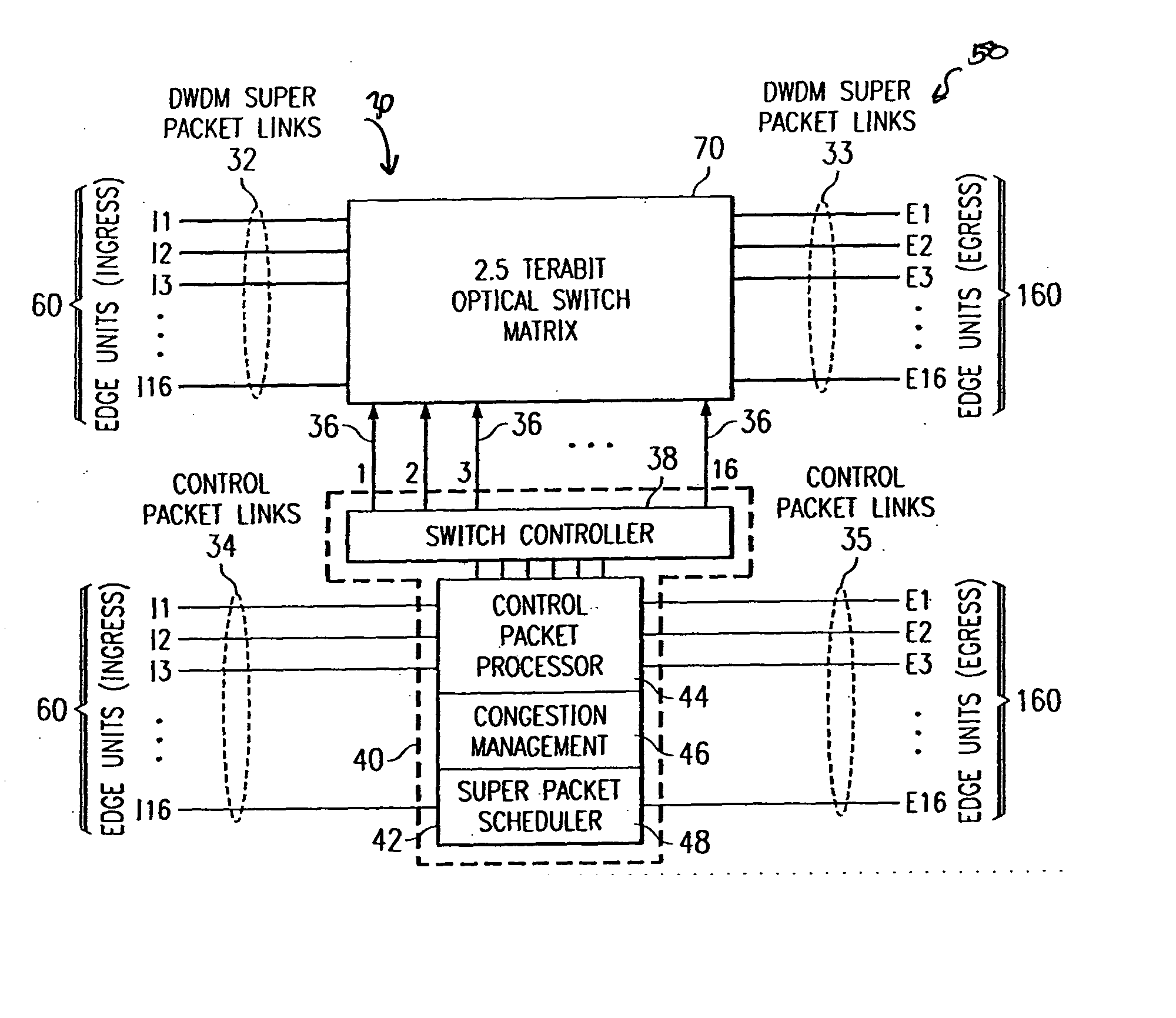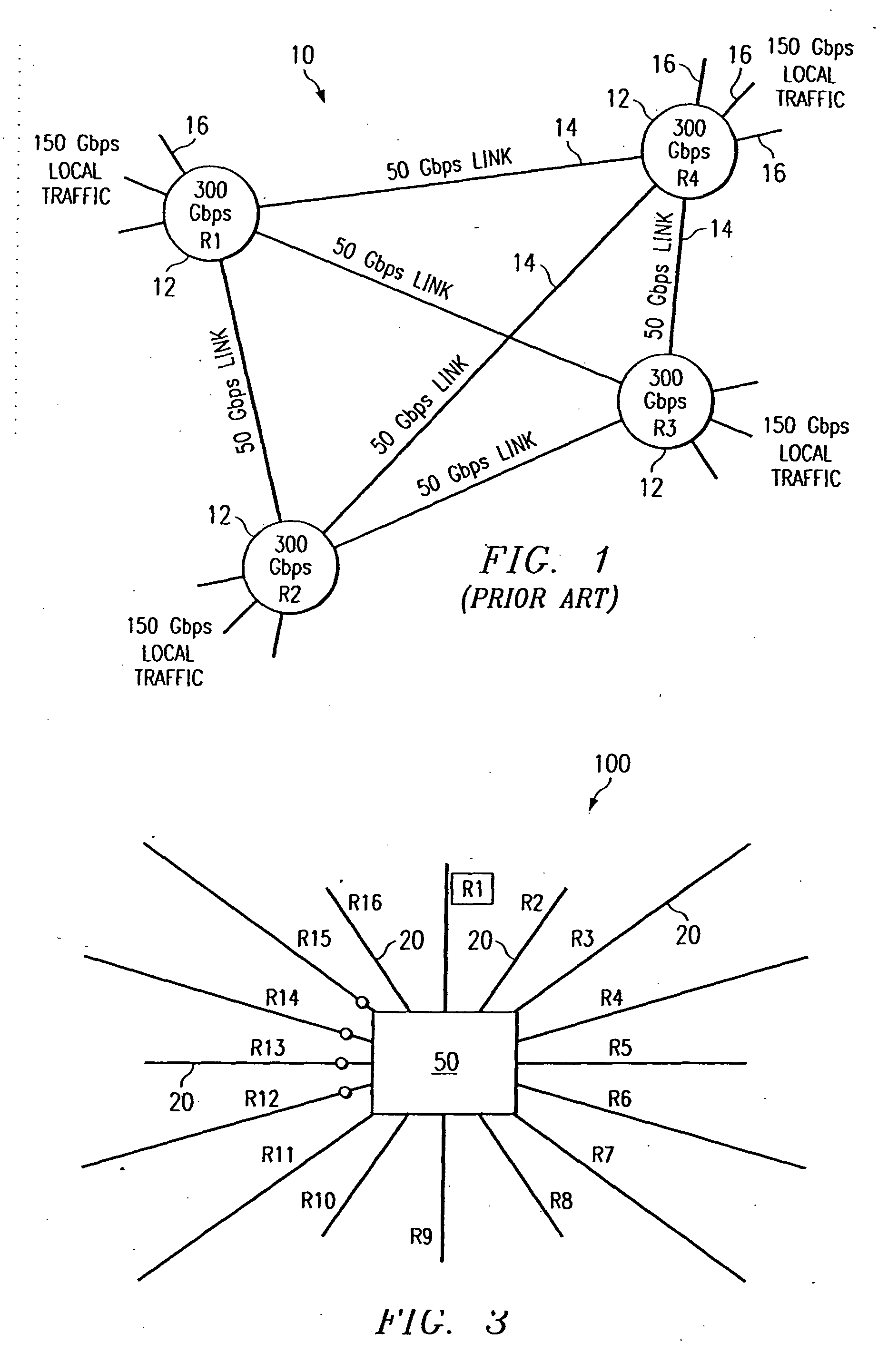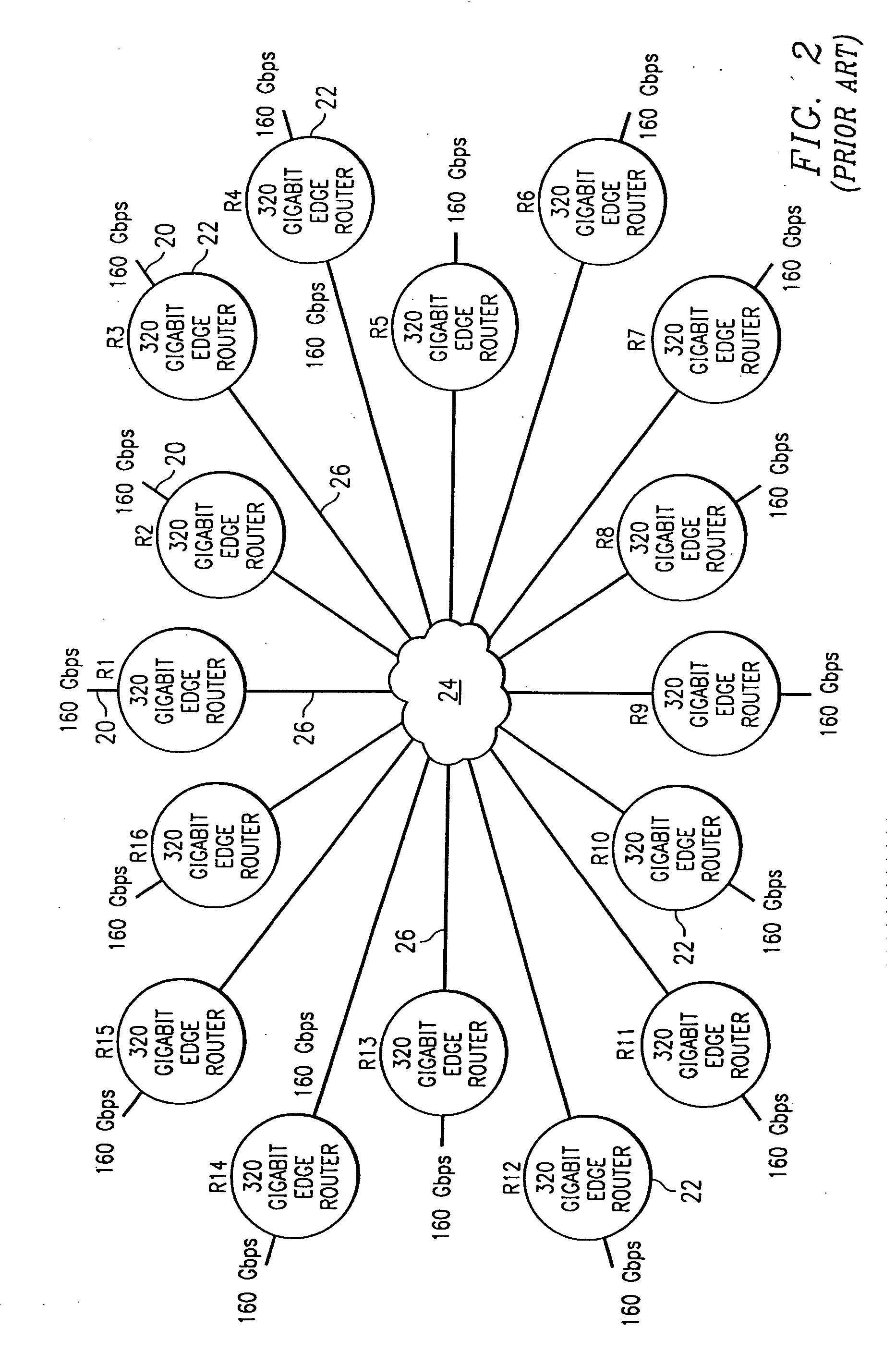Apparatus and method for optical switching at an optical switch fabric
a technology of optical switch fabric and optical switch, applied in the field of optical crossbar switch, can solve the problems of reducing efficiency, current telecommunications network not meeting these requirements, electrical and electro-optical switching routers are limited in switching speeds, etc., and achieve the effect of increasing the router/switch capacity and high scalabl
- Summary
- Abstract
- Description
- Claims
- Application Information
AI Technical Summary
Benefits of technology
Problems solved by technology
Method used
Image
Examples
Embodiment Construction
[0027] Preferred embodiments of the present invention are illustrated in the FIGUREs, like numerals being used to refer to like and corresponding parts of the various drawings.
[0028] The present invention provides an optical switch architecture that provides full, non-blocking interconnectivity without increasing the router / switch capacity beyond that required to service the data capacity coming into the router / switch from the network communities being serviced. The present invention provides routing for fixed and variable length optical data packets of varying types (including Internet Protocol (IP), data, voice, TDM, ATM, voice over data, etc.) at speeds from sub-Terabit per second (Tbps) to significantly in excess of Petabit per second (Pbps). The present invention utilizes a unique, non-blocking optical switching architecture to obtain these benefits in speed and interconnected capacity.
[0029]FIG. 3 shows an optical network 100 including a number of data lines 20 (or “data lin...
PUM
 Login to View More
Login to View More Abstract
Description
Claims
Application Information
 Login to View More
Login to View More - R&D
- Intellectual Property
- Life Sciences
- Materials
- Tech Scout
- Unparalleled Data Quality
- Higher Quality Content
- 60% Fewer Hallucinations
Browse by: Latest US Patents, China's latest patents, Technical Efficacy Thesaurus, Application Domain, Technology Topic, Popular Technical Reports.
© 2025 PatSnap. All rights reserved.Legal|Privacy policy|Modern Slavery Act Transparency Statement|Sitemap|About US| Contact US: help@patsnap.com



